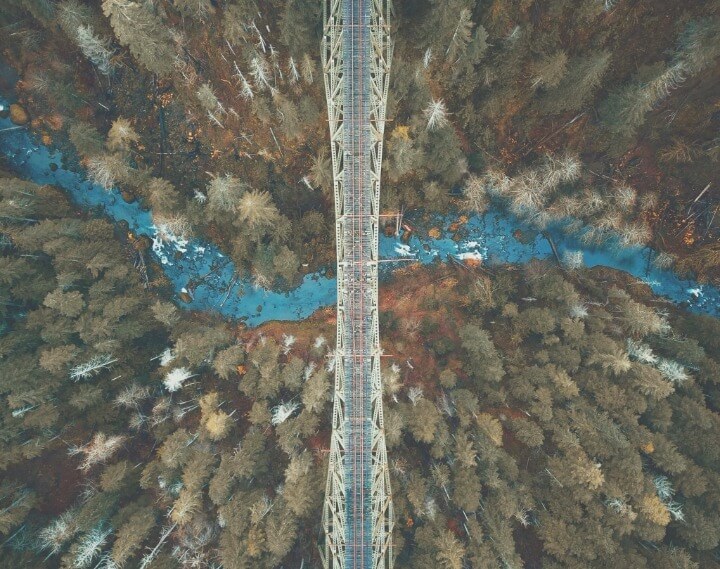Like bats emerging from nearby Carlsbad Caverns, questions flew about the halls of the School for Advanced Research. It started with a backstage tour of that day’s Science Times story of an underwater menagerie, followed by an anthropologist’s quest to unlock the secret of genius. We wrapped up the afternoon with a chilling ethnography of a factory farm from “semen to cellophane.” We’d have plenty of topical fodder for our own writing assignments.
The Santa Fe Science Writing Workshop would give me, a scientist, exactly what I came for – a stronger handle on the world of journalism and ways to improve my writing skills. But, I was unprepared for just how rich the experience would be.That richness comes down to the power of story. The stories behind the pieces shared by our wonderful slate of instructors: Sandy Blakeslee (co-founder), George Johnson (co-founder), Christie Ashwanden, David Corcoran, Robert Lee Hotz, Paul Raeburn, and Jamie Shreeve. Our personal stories that created connections and community across an eclectic group – writers, journal editors, poets, historians, scientists looking to escape the bench, and lots of people seeking a new direction for their life. And of course, writing in story.
We kicked off the workshop at the strikingly beautiful School for Advanced Research.
Photo courtesy of Josh Witten.
As an ecologist who’s a generalist, and often feels like a bit of an oddball among PhDs, I had come to the right place. We were all generalists. (That was a reason many had left or were leaving science). Showing a photo of her last-ever stint at the lab bench, freelancer and instructor Christie Aschwanden captured it perfectly, “I couldn’t do a PhD because I had to pick just one thing.” All of us, whether trained as scientists or journalists, shared something deep in our bones – an abundance of curiosity and a desire to learn a little about a lot, rather than a lot about a little.
The first morning, David Corcoran said, “there is no question that’s too stupid if you’re a writer.” And he meant it.
Thinking like a journalist means asking questions. Good science writing is about good questions and the journey to address them, rather than scientific results. Good stories can even be about a failed quest, as George Johnson illustrated for us with the epic saga behind his National Geographic story Chasing Lightning in which Tim Samaras never did catch lightning in the act, despite five years of trying.
And the bits you glean from asking those questions are what you weave together into a story. Sharing the story behind his LA Times piece Butterfly on a Bullet about the Columbia disaster, Lee Hotz knocked on doors in nine cities. He gleaned material everywhere – from top-secret government labs to the kitchen of a Nobel Laureate – to ultimately piece together a Pulitzer finalist story.
For journalists it’s ALL about story. And, as I’ve heard Nancy Baron say so many times, not necessarily the WHOLE story.
Thinking like a journalist also means being skeptical.Christie said, “If your mother tells you she loves you, check it out.” This is something we scientists already possess in spades, but the similarity is worth noting. As Lee shared at the workshop, “Every science story is an experiment in trust. As science writers, it is our particular obligation that such tales of wonder are true.”

Fresh air gets the creative juices flowing. My fellow classmates climb the 140 ladder rungs to the Alcove House at Bandolier National Monument. Photo courtesy of Brian Clark.
So what about writing like a journalist? Although I love spending time with them, I don’t plan to ever be a journalist. What struck me at the workshop was how helpful writing like a journalist could be for writing blogs, grant proposals, leave-behinds for policymakers, or (gasp!) even a scientific paper.
Journalists write in story. Stories have a destination – a clear beginning, middle, and end. Sounds simple (and it is to kids), but many of us unlearned this somewhere along the line. One common mistake for scientists, in particular, is conflating a topic with a story. Scientists focus on topics, but journalists look for story. The neuroscience of Einstein’s brain is a topic. Understanding why 240 pieces of his brain remain fiercely guarded across the globe is a story.
Journalists start their stories with a lede – a way to grab the reader and have them read on.
Lee’s lede for Butterfly on a Bullet is spectacular: James Hallock discovered just how little it takes to bring down a space shuttle. He did it by playing with pencils.
In very few words, he gives us a sense of character, clever irony, and whets our appetite to want to know more, all without giving too much away.
Next comes the nutgraf (short for nutshell paragraph) that places the ‘so what’ front and center. What’s the gist of the story? Why are you writing it? Why should a reader care? Why now (in terms of both timeliness and topicality)?
Multiple paragraphs follow – the cars behind the engine of the lede and nutgraf.
And, finally, the kicker. You need to end. Tie it up with a bow. But how? When I asked, Sandy Blakeslee responded, “You’ll know it when you see it.”



